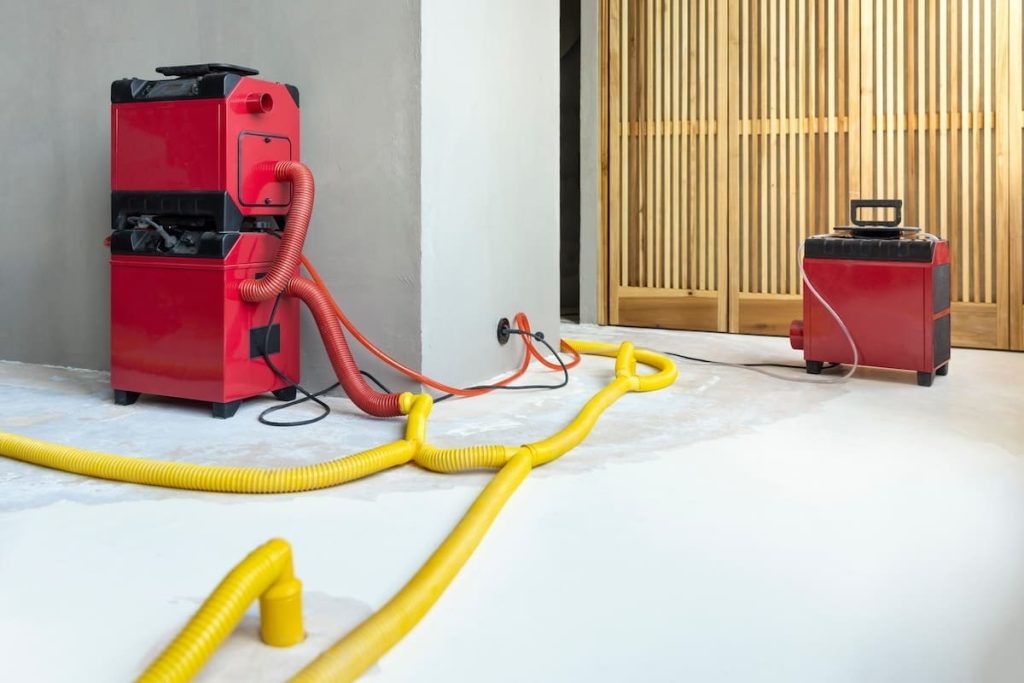When water damage strikes a commercial property, time becomes the most critical factor. Whether it’s a burst pipe, heavy rain, or an overflowing appliance, water can seep into structures, flooring, and furnishings within minutes—causing irreversible damage. Yet, many business owners delay action, either due to cost concerns or uncertainty about what to do next. Unfortunately, that hesitation can result in much more significant expenses and operational disruptions.
In this article, we explore why immediate commercial water damage restoration is not just recommended—it’s essential—and what the real costs of delay look like across various fronts.
Structural Damage Escalates Quickly
Water doesn’t remain static. It spreads rapidly, seeping into walls, ceilings, floors, and even the foundation. In the first few hours, this might appear as superficial damage—perhaps a wet carpet or a few ceiling stains. But by the 24-hour mark, drywall begins to disintegrate, wooden studs swell, and metal fixtures begin to rust.
Left untreated, water can compromise the structural integrity of the building. That turns what could have been a straightforward cleanup into a full-scale renovation. The longer the delay, the more costly and invasive the repairs become.
Mold Growth: A Hidden But Costly Threat
Growth of mold is one of the most serious risks associated with untreated water damage. In as little as 24 to 48 hours after being exposed to water, mold spores can start to form colonies because they like wet conditions. Once established, mold can spread behind walls, under flooring, and into HVAC systems—posing both health and liability risks.
For businesses such as healthcare facilities, restaurants, or offices with high foot traffic, mold presents an even greater threat. Remediation is far more expensive than prevention, and mold-related illnesses can open the door to legal and insurance complications.
Business Downtime Equals Revenue Loss
Perhaps the most immediate cost of water damage for commercial properties is operational downtime. If your office, storefront, or facility becomes unusable, you’re not just dealing with repair costs—you’re losing revenue every hour you’re closed.
For retail shops, that could mean thousands of dollars in missed sales. For offices, it could lead to lost productivity, missed deadlines, and damaged client relationships. In the hospitality industry, every unoccupied hotel room or closed-off banquet space is a direct income loss.
Rapid restoration ensures that your company can resume regular activities as soon as feasible and helps to reduce this downtime.
Increased Insurance Complications
Many commercial property owners don’t realize that insurance companies may deny or reduce claims if they determine that the damage was worsened by negligence or delay.
Most policies require prompt reporting and timely mitigation efforts. Failing to act quickly may give the impression that you allowed the situation to deteriorate, thereby voiding portions of your claim. Immediate restoration shows due diligence and helps preserve the maximum benefit of your insurance coverage.
Equipment And Inventory At Risk
Water damage doesn’t just affect walls and floors—it also impacts inventory, electronics, furniture, and machinery. If your business uses specialized equipment or stores products onsite, a flood or leak can be devastating.
Delaying cleanup means exposing valuable assets to more prolonged water contact, increasing the chances that they will need to be replaced rather than restored. Prompt action by a professional restoration team can salvage and dry many types of equipment and materials, ultimately saving thousands in replacement costs.
Reputation And Compliance Risks
In certain sectors—particularly healthcare, education, and food services—prolonged water damage or mold can violate regulatory standards. Health inspectors, safety officials, or building code enforcers may shut down your operation or levy fines if your premises are deemed unsafe.
Even in less regulated industries, customers and clients who witness water damage or foul odors may be reluctant to return. Damage to your reputation can take far longer—and cost more—to repair than the physical structure itself.
The Role Of Professional Restoration Services
A professional commercial water damage restoration company brings immediate value by assessing the extent of damage, stopping water intrusion, extracting standing water, drying affected areas, and monitoring moisture levels. Their expertise and industrial-grade equipment speed up recovery dramatically.
Additionally, professionals can help document the damage for insurance claims and ensure that all hidden issues—such as moisture behind walls or under floors—are identified and addressed.
Conclusion: Delay Costs More Than You Think
Delaying commercial water damage restoration is a gamble—one that rarely pays off. The visible effects of water intrusion are only part of the problem. Left untreated, hidden moisture and mold can escalate into severe structural, financial, and operational consequences. By acting immediately, businesses protect their assets, reduce downtime, maintain insurance coverage, and, most importantly, keep their doors open and their customers confident. In the world of commercial property, a fast response isn’t just good practice—it’s a necessity.

